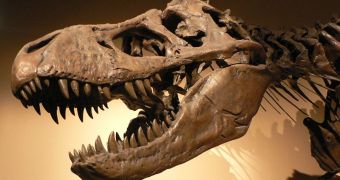A new research seems to indicate that dinosaurs didn't take over their habitat right after they first appeared, but instead underwent millions of years of constant change, until they became perfectly adapted to the environment. Professors at the University of Bristol say that dinosaur evolution was a very slow process, allowing for the large variety of species that we know of today.
Dinosaurs also survived two mass extinctions on a planetary level, first the Late Triassic mass extinction (228 million years ago) and then the Triassic-Jurassic Boundary extinction event, more than 200 million years ago. Furthermore, they did not evolve as other species by multiplying and occupying other niches in the eco-system, but rather waited for their turn for planet domination.
Professor Michael Benton says that the evolution took the long path in the case of dinosaurs. During their many years of survival as a species, these animals developed powerful offensive or defensive mechanisms, as well as cunning instincts, to help them avoid becoming prey. Also, numerous species evolved from common heritage, creating the biodiversity scientists believe existed during the Jurassic and the Triassic periods.
Dinosaurs evolved in all shapes and sizes, from the giant plant-eating Brontosaurus, to the smart and agile Velociraptor. Their ability to adapt and exploit ecosystemic gaps allowed them to slowly but surely become the dominant species on Earth. The two world-class extinction events dealt crippling blows to dinosaur numbers, first eliminating over 35% of all dinosaur types, and then whipping out a further 50% of all animal species on the planet.
According to historic and archaeological findings, dinosaurs first appeared some 223 million years ago, as evolved mammals. Over time, they became the dominant species, as other mammals were no match in size. Some dinosaurs developed amazing brain structures, allowing them to see colors and cleverly stock prey. Others got really, really fast feet and became the ancestors of most of today's big felines. "Small" creatures, such as elephants and rhinoceros, are direct descendants of large dinosaurs such as the Stegosaurus or the Triceratops.
Benton only pointed out that, given less time for evolution, dinosaurs might not have evolved to such diversity, which would have meant less direct descendants in our animal world and, implicitly, less biodiversity today.

 14 DAY TRIAL //
14 DAY TRIAL //